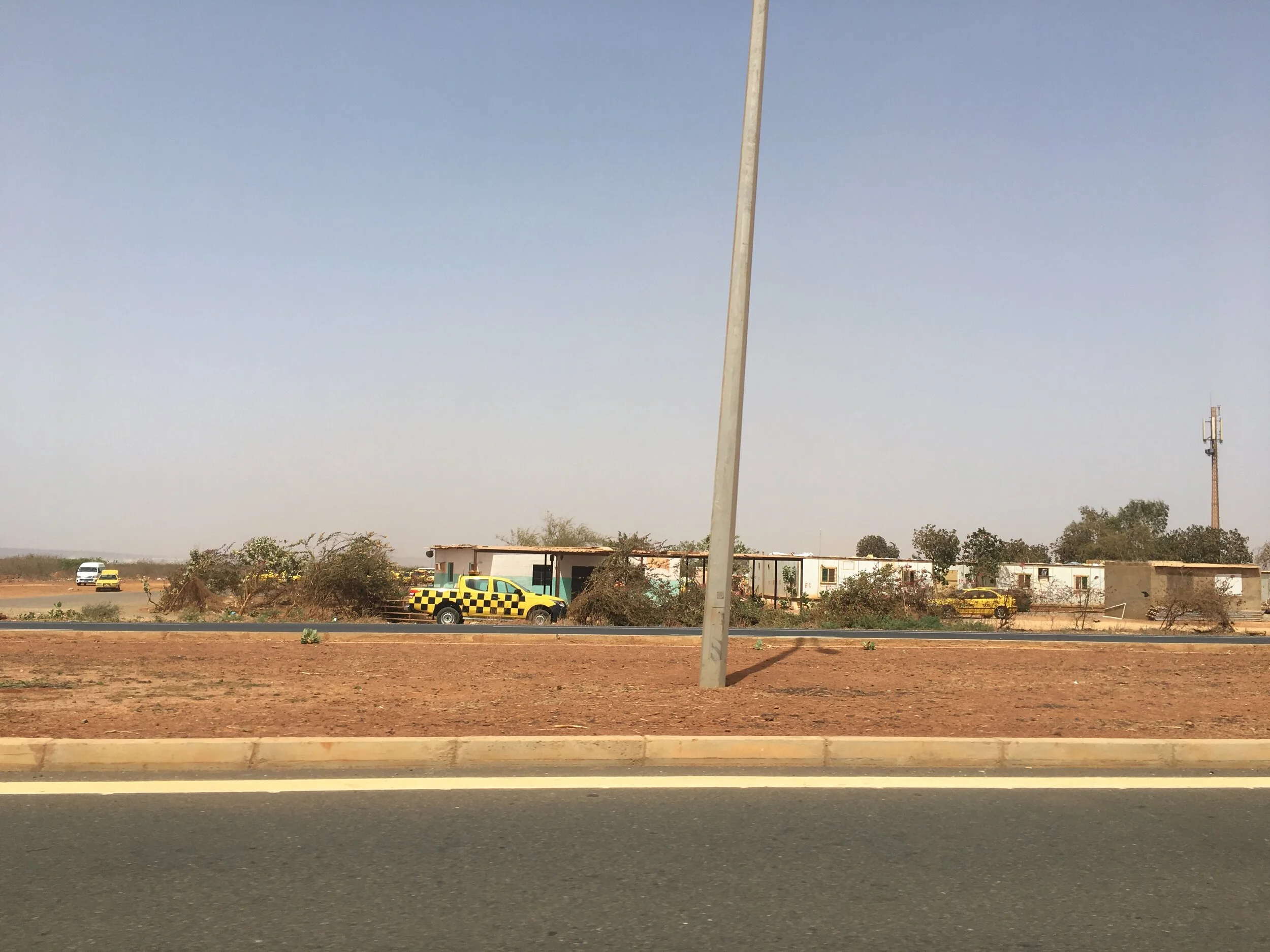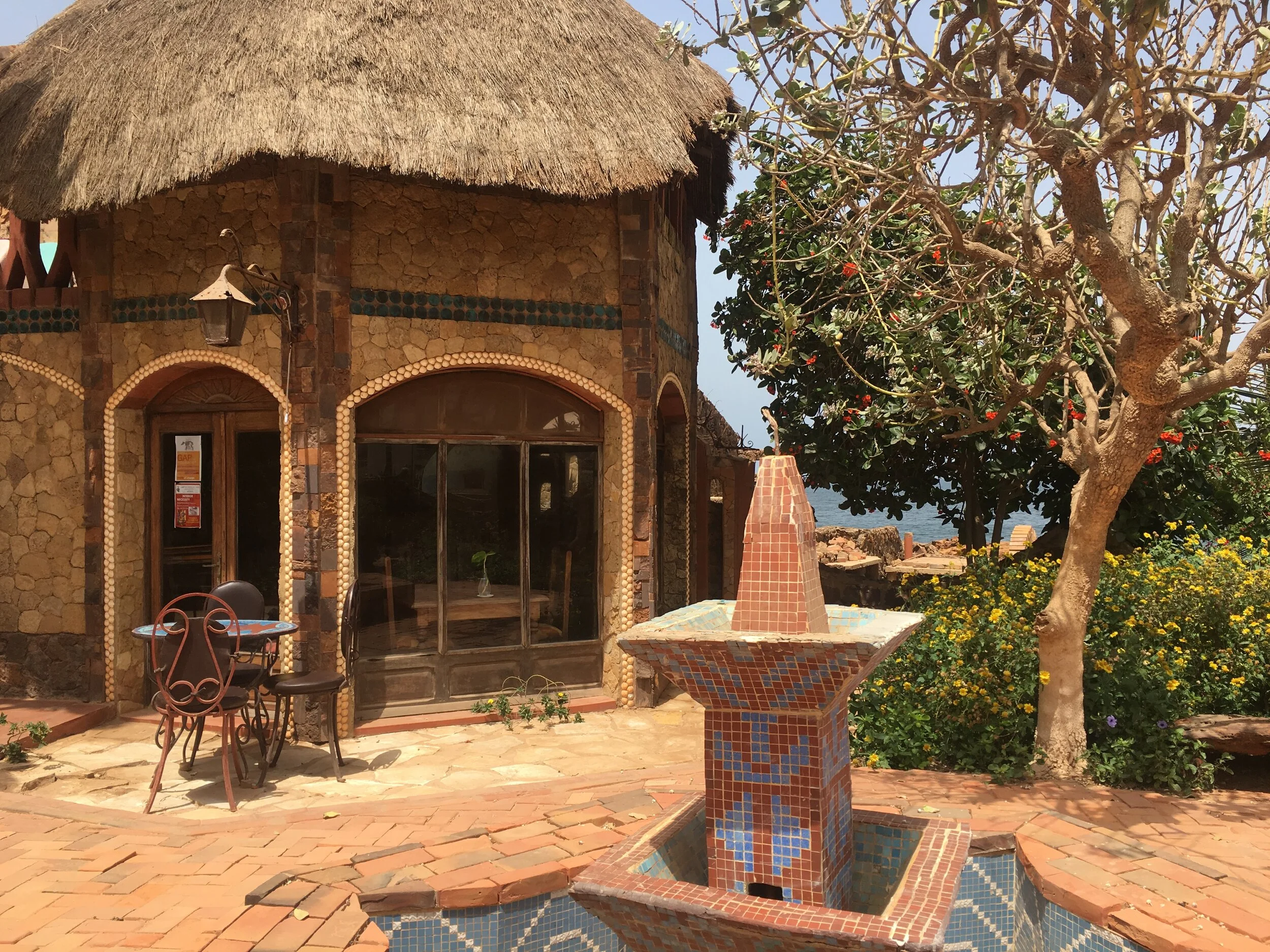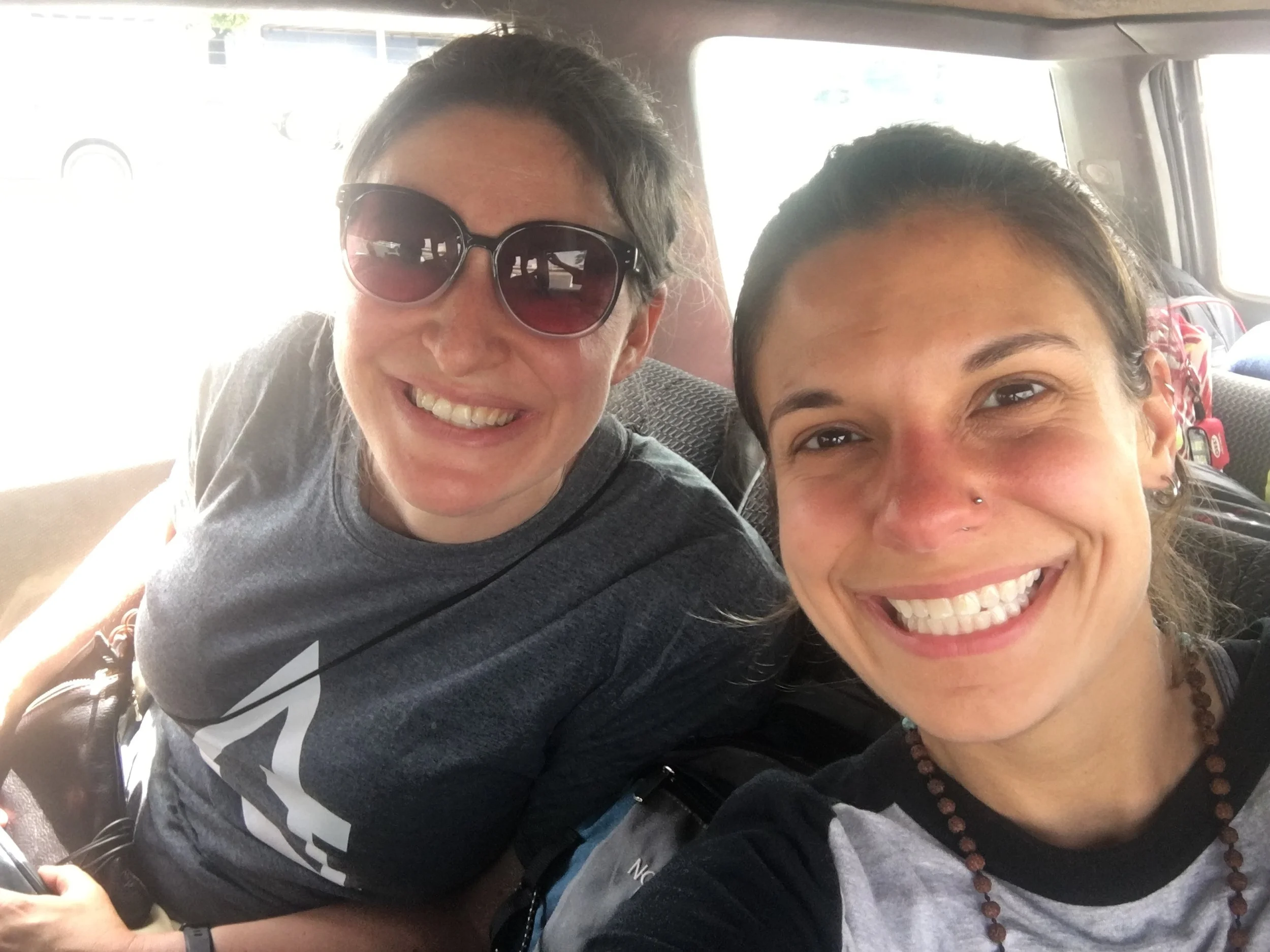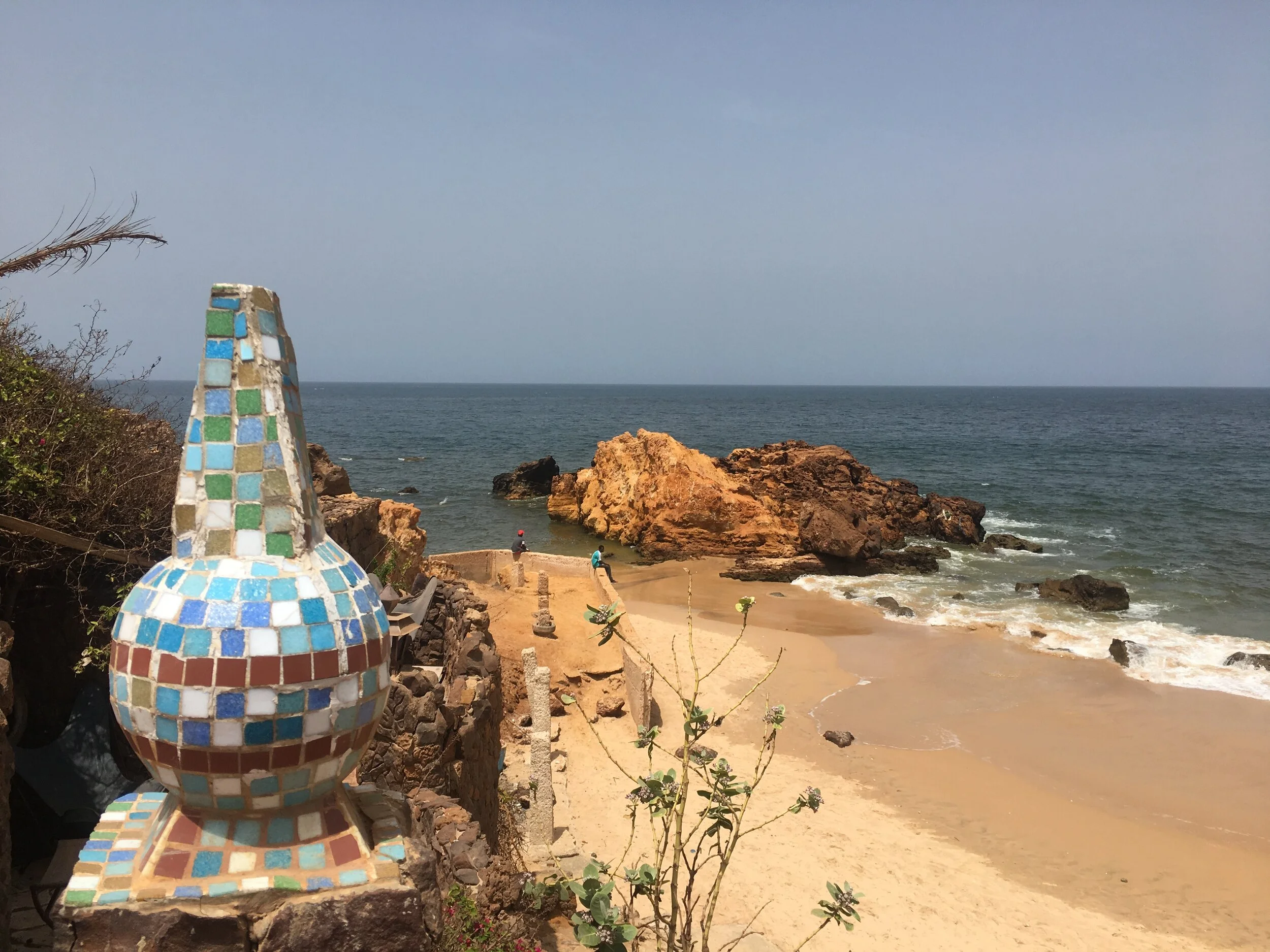Getting to Toubab Dialaw, Senegal
The paved road to Toubab Dialaw quickly turned to dirt as our driver veered off the two-lane highway toward the coast. We had already passed a dozen completed but seemingly unused cookie-cutter multistory red and yellow building. Now the buildings we passed were still unused but also in various states of completion, the cinderblock walls had rebar peaking out of the cement corners and none of the floors were done.
Passing towns as we drive from the airport.
Our driver told Megan in French that the people build in piecemeal as they come into a bit of money and then let the buildings sit until they have enough to continue. Most homes aren’t subject to building inspections or codes if they cost less than $60,000 to build. That fact combined with rapid urbanization and household sizes averaging 9 people lead to sprawling uncheck development and the proliferation of shanty towns.
The cab of a crashed truck lay on the side of the high way. It seemed to have been there a while. Women carrying buckets of mangos on the their heads diverterd left or right when they arrived at the crash. No one seems perturbed.
Like many rural and developing locations, the prevalence of livestock in places populated by people was the norm. Our driver swerved to avoid hitting a heard of goats crossing the road. Donkeys and cows were tied up in empty lots crowded into the scarce shade made by the acacia trees.
The bar entrance to Sobo Bade.
Our driver told us he would show us a baobab tree and pointed out the huge plant in the distance off the highway. Megan and I reminisced about The Little Prince who uprooted the small baobabs on his planet before tending to his own needs each morning.
Neither the speedometer nor the gas gauge worked in our driver’s car, the floor of which was carpeted with astroturf. I noticed a gas tank in the trunk when we loaded our bags and figured he must have had to use it on more than one occasion.
The road was bumpy though grated and I now understand why the guide books say certain areas are impassable in the wet season. After about 30 minutes we arrived at Sobo Bade, an artists commune and hotel in the fishing village of Toubab Dialaw.
Our room at Sobo Bade.
Chris, Megan and I are sharing a three-person room. They have a double bed and I have a slightly-smaller-than-single. Our beds are separated by a 12” walk way. My mosquito net in orange and theirs is blue. A floor fan is the only source of temperature control. On the other side of the room a 2ft x 4ft tiled shower area has a short curtain, bucket and scoop and a hose connected to the wall. The water is cold and my 5’3” frame can easily see over the curtain. It doesn’t offer much in the way of privacy but I have a feeling the three of us will get used to being in close quarters over the next six weeks.
The toilet is outside and down the veranda in it’s own room. Toilet paper goes in the bin. I moved our batiked butterfly chair to the balcony to make a bit more room for our bags. It’s rugged but the hotel grounds are impeccably landscaped and the architecture is covered in mosaics and shells. It’s the perfect place to spend two days relaxing by the beach and overcoming our jet lag.






